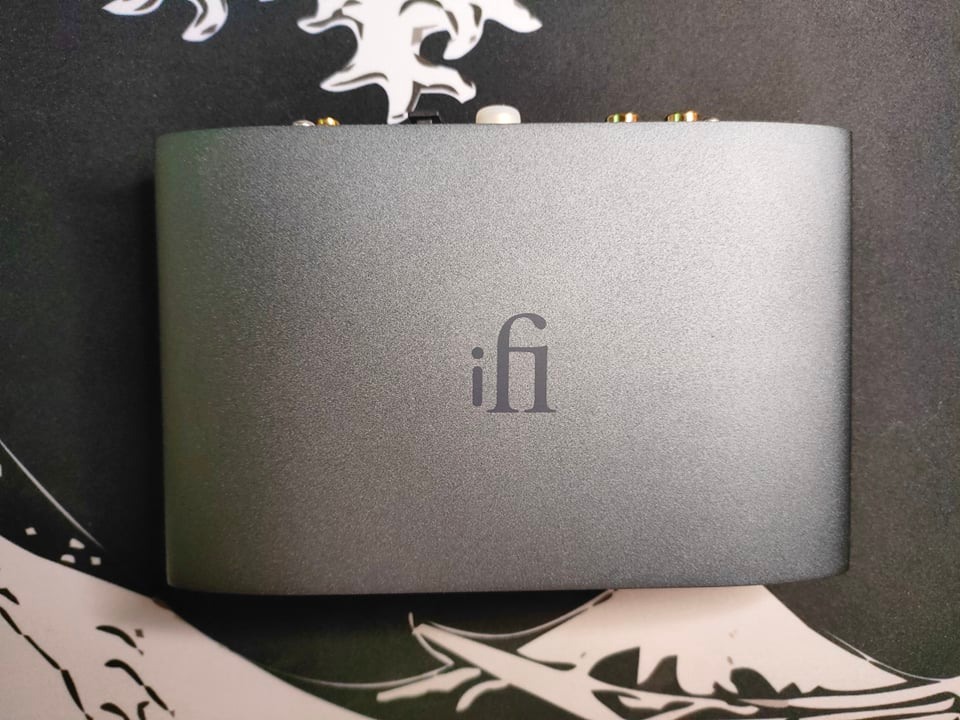General Information
First of a new range of audio components priced at just £129, US$129 and €149, iFi’s ZEN Blue delivers hi-res Bluetooth streaming to any audio system
Southport, England – iFi kicks off a new range of high-quality, super-affordable, desktop-sized audio products with the ZEN Blue – the world’s first Bluetooth receiver supporting all the latest hi-res codecs for the best-quality music streaming from smartphones, tablets, PCs and Macs to any audio system.
The ZEN Blue immediately impresses with its sturdy aluminium enclosure, unusual at such a low price. But what really sets it apart is the circuitry within – as always, iFi has gone to great lengths to ensure that sound quality over Bluetooth is the best it can be, even if it has to be designed from the ground up.
Bluetooth reception represents a mere convenience for many audio manufacturers, enabled in the simplest and cheapest way to ‘tick a box’ on the features list. But the manner in which Bluetooth is implemented – the quality of signal processing and the circuitry that surrounds it – has a big impact on performance. Not all Bluetooth sounds the same, and iFi engineers its products to obtain the best possible performance from every audio source – Bluetooth streaming included.
With the ZEN Blue, this starts with a state-of-the-art Qualcomm QCC5100 chip to process the incoming data – the ZEN Blue is the first product of its kind to benefit from this new-generation Bluetooth IC.
All the latest 24-bit-capable Bluetooth audio formats are supported, including Qualcomm’s aptX Adaptive and aptX HD, Sony’s LDAC and Huawei’s HWA – no other Bluetooth streamer boasts this cutting-edge hi-res specification. Other codecs covered include regular aptX and aptX Low Latency, AAC (the favoured format of Apple iOS devices) and SBC (the ‘plain vanilla’ Bluetooth codec). This means that every possible source device is covered at the highest audio resolution its Bluetooth specification allows.
The Qualcomm QCC5100 offers a ‘system-on-a-chip’ Bluetooth solution, with all functions covered including D-to-A conversion. Many manufacturers would simply rely on this chip to deliver the DAC function, but this is not the iFi way. The ZEN Blue has separate digital and analogue stages; to feed the analogue stage, the processed digital signal is routed from the QCC5100 to a specialised DAC chip from ESS Technology’s Sabre family to convert the signal from digital to analogue.
One of the key advantages of the ESS Sabre DAC chip is its Hyperstream architecture with integrated Time Domain Jitter Eliminator, which helps to deliver vanishingly low distortion and high dynamic range. iFi has found that this allies perfectly with the Qualcomm chip to deliver Bluetooth audio that sounds far better than the norm.
None of this would mean much if the rest of the ZEN Blue’s circuitry were not up to scratch. This is the first iFi product to benefit from the input of legendary audio designer John Curl, who has teamed up with the iFi electronics design team, led by Technical Director Thorsten Loesch, to ensure the circuit design of every product is fully optimised.
The ZEN Blue’s analogue output stage is a balanced design – highly unusual in a DAC anywhere near this price point. It incorporates a range of high-quality circuit components, carefully selected for their performance in an audio context, including professional-grade balanced line drivers, C0G capacitors from TDK and a precision low-noise power supply IC from Texas Instruments. It all adds up to a highly affordable Bluetooth streamer with a sound that punches well above its weight.
It’s all connected
The ZEN Blue adds high-quality Bluetooth reception to any audio system via analogue or digital cable connections. A switch at the back dictates how the digital signal is routed; either through the DAC and analogue output stage, or directly to the digital outputs. On the analogue side, RCA stereo outputs allow connection to amplifiers, active speakers and the like, while a 4.4mm Pentaconn output enables balanced signal transfer to amps/speakers equipped with a balanced input – either a 4.4mm input, or XLR inputs via a 4.4mm-to-XLR cable. For digital connections, optical and coaxial outputs are provided – these allow connection to anything with a built-in DAC and corresponding digital input, such as an AV amp or an external hi-fi DAC.
The ZEN Blue ‘remembers’ up to seven paired Bluetooth source devices, making it easy to switch from one device to another, with impressive reception range thanks to the latest Bluetooth 5 specification. The DAC stage handles sampling rates well in excess of the maximum delivered by current hi-res Bluetooth formats – of the 24-bit-capable codecs, aptX Adaptive and aptX HD support up to 48kHz, while LDAC and HWA reach 96kHz.
The LED at the centre of the ZEN Blue’s front panel changes colour to identify the Bluetooth codec being received, while another LED to the right indicates the sample rate. Qualcomm’s QCC5100 chip can be updated over-the-air, enabling future Bluetooth codecs to be added to the ZEN Blue’s specification.
Find your ZEN
Available from October, the ZEN Blue hi-res Bluetooth streamer is the first of a range of ZEN Series products, all of which share the same 158x35x100mm (WxHxD) aluminium case. It will be followed swiftly by the ZEN DAC, which swaps Bluetooth reception for a USB input and adds an integrated headphone amp. Further ZEN Series products will arrive in the coming months.













